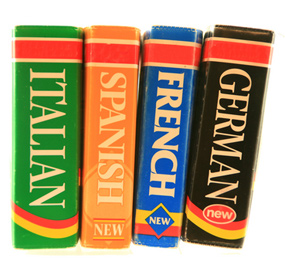Just last weekend, my parents, uncle and his girlfriend, came to visit me in Chicago. For my parents, it was an opportunity to see their daughter and spend some quality family time together. While it was also that for my uncle and his girlfriend, it was also a chance to see a new city, since neither had been here before. Of course, they asked me what they should see and do, and I ran off the usual list of attractions. They decided to do the Architecture Tour along the river, which I think is one of the better tours offered in Chicago. Not only is it a great way to see a lot of the downtown area, but it provides great backround on Chicago's history.
While I will always recommend this tour to first time visitors, I cannot guarantee that everyone will appreciate it, since each person has different tastes, opinions, and interests that could be fulfilled through other options. There's walking tours, bus tours, mob tours, ghost tours, museum tours, the list goes on and on. But even with all these, some people may still be looking for something different, unusual, off-kilter.
Enter the internet and its vast array of travel-sharing websites touting specialty tours, unique experiences and some pretty odd activities not generally listed on a tourism site. I learned about these through a
New York Times article, which discusses a few of the platforms.
 |
| Tequila Adventure Rapel |
What makes these sites work is the artists, chefs, students, writers, hobbyists, and musicians, who offer their services to those looking for a truly novel experience. Some websites are better than others about making sure guides can deliver on their promises, while other rely on peer reviews.
CanaryHop.com was co-founded by "Saturday Night Live" star Andy Samberg and launched in March. It is a searchable list of about 2,500 guides and service providers, which are referred to on the site as "canaries," while travelers are called "hoppers." Some examples of experiences are a circus training in Las Vegas; a fire engine tour in San Francisco; camping in the Mojave Desert with a botanist; New York City makeup and accessories tour; and home cooking and eating with a family in Delhi.
Gidsy.com is another option that has grown popular in the last year. With the tagline "do something different," the website certainly lives up to that mentality with its options. It features offerings in nine cities, with activities like a chocolate and grappa tasting in Hasselt, Belgium; a tango lesson in London; a street photography workshop with a professional photographer in Istanbul; and a challah braiding and baking class in New York.
 |
| East London Street Food Tour |
The idea behind
Vayable.com is to give travelers a deeper look into at a local culture through experts. The site has 1,500 guides on almost every continent--it hasn't quite made it to Antartica. Travelers can search ac tivities by city and then book their own experience or join a pre-arranged tour. Some of the options include a hookah and tea tour in Istanbul, fly fishing in Alaska with the may of Kenai, a tour of East London street food, and a Harley-Davidson motorcycle tour of Versailles and Rambouillet.
Another option if you are just looking for unique experiences in New York is
SideTour. The founder, Vipin Goyal, said there are plans to expand, but New York certainly offers a plethora of exciting and intriguing opportunities. Most of the listings are updated weekly and sell out weeks in advance, so book early! Popular offerings include a street art tour and graffiti demonstration, urban beekeeping in Brooklyn, and creaft beer brewing.
As someone who is often looking for something different to do in my own city, perhaps I should see if there are any special activities/tours in Chicago. That way the next time someone asks me about what they should do here, I can offer something that's a little bit off the beaten path. And for my future travels, I will certainly give these sites a quick run through to see if there is anything I would like to take part in during my visit. Because what could be better than finding a hidden art gallery that isn't featured in every travel guide? Or tasting street food from the vendor that doesn't have a line around the block but is just as good--if not better--as that guy that was featured on the food network? Or having an in depth conversation with a local author while sipping regionally-made wine at an underground jazz club? It's these kinds of odd experiences and locations that make a city what it is, so why not take the opportunity to peel back the artificial layers and see the roots.







